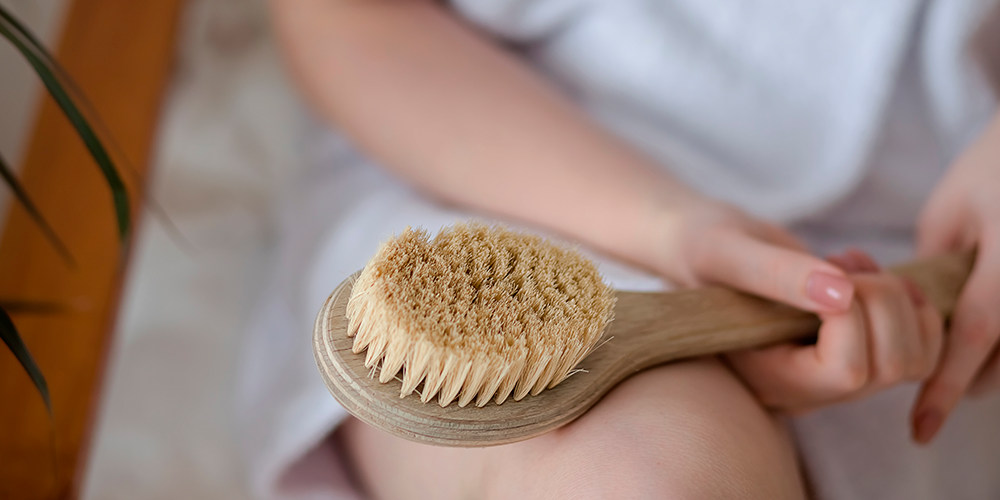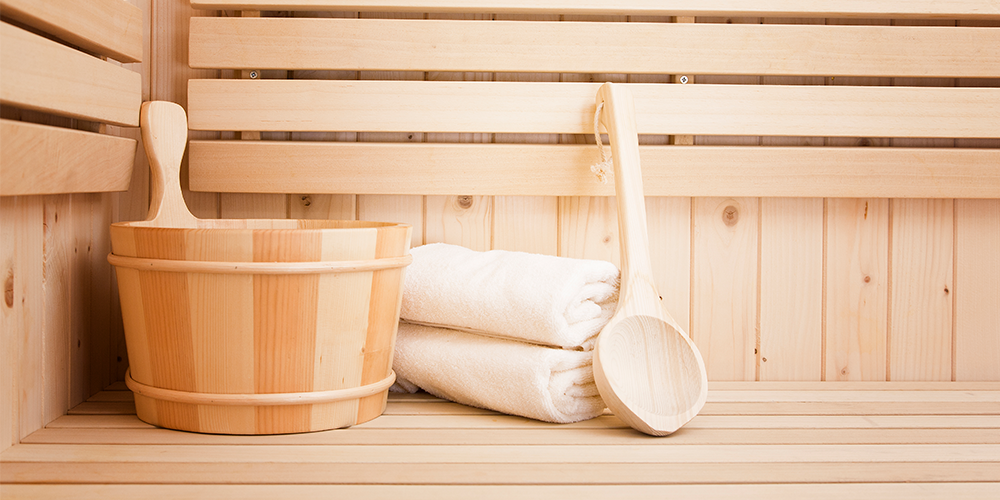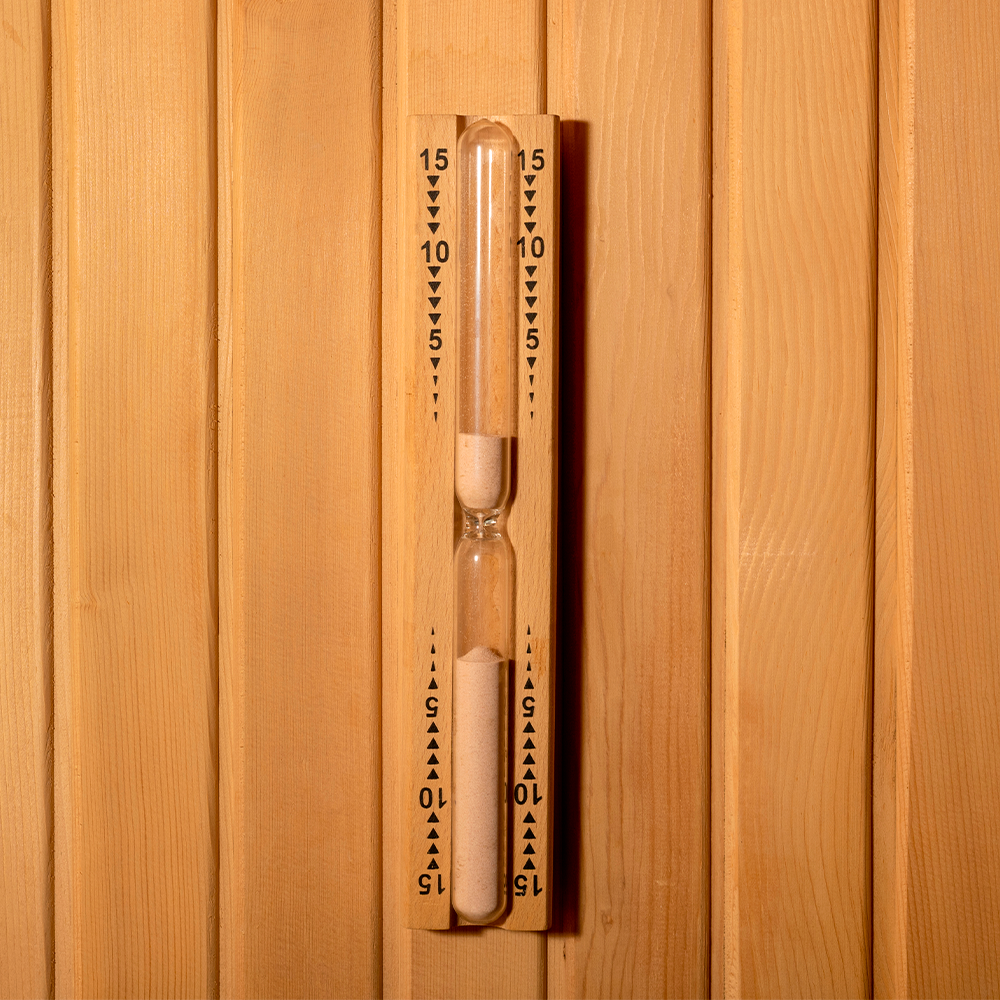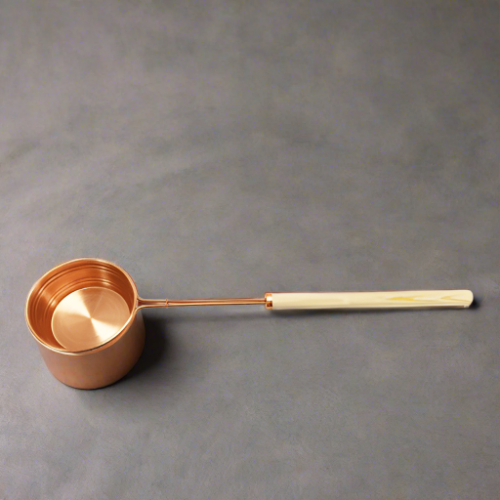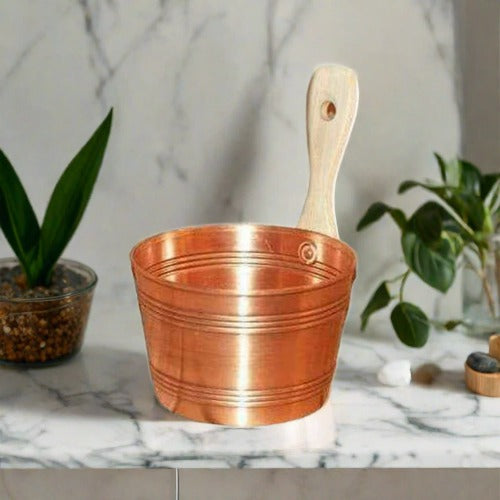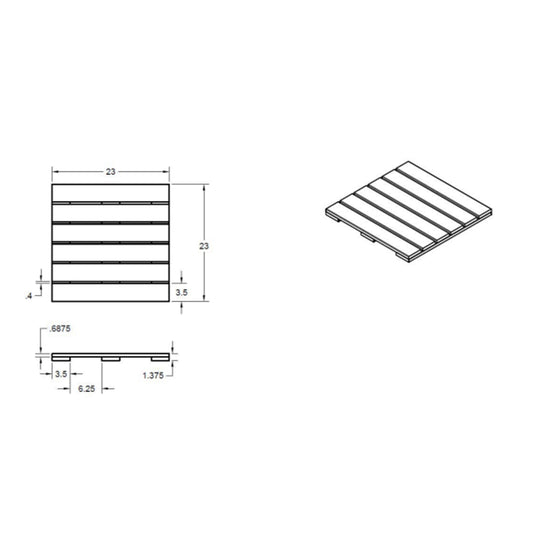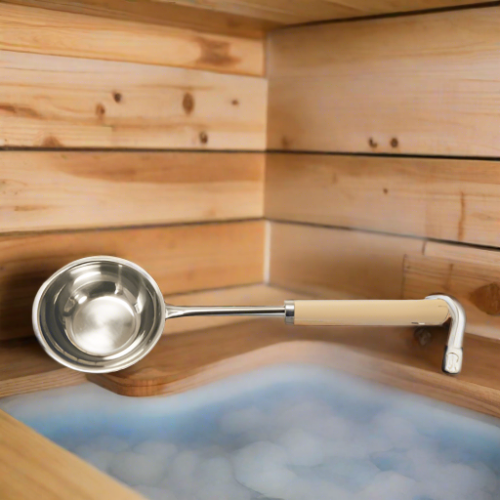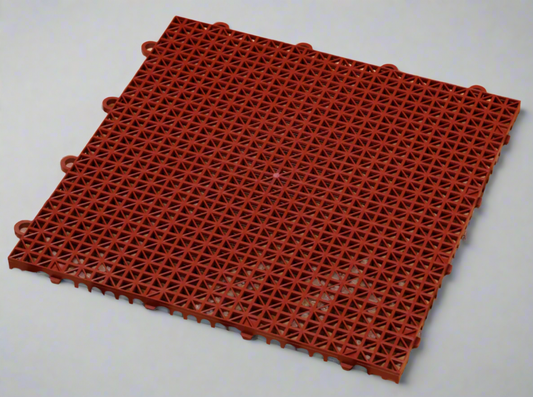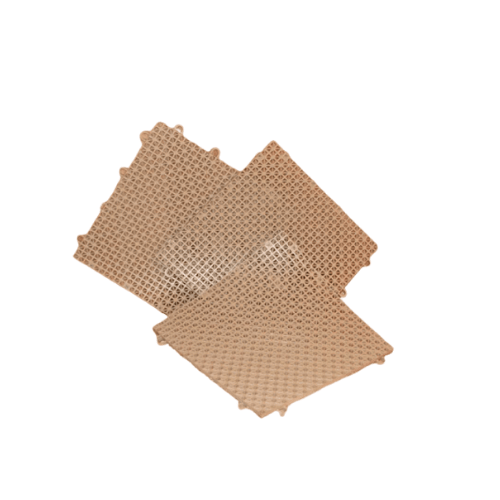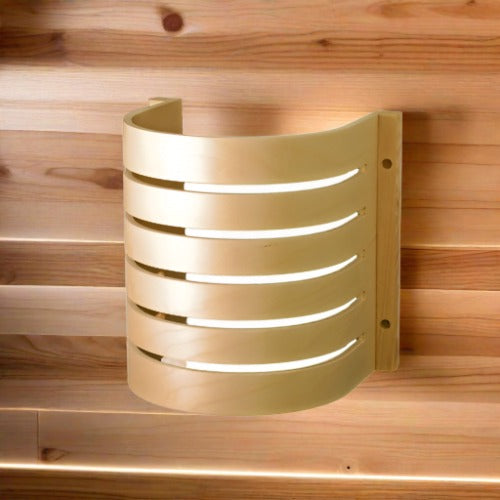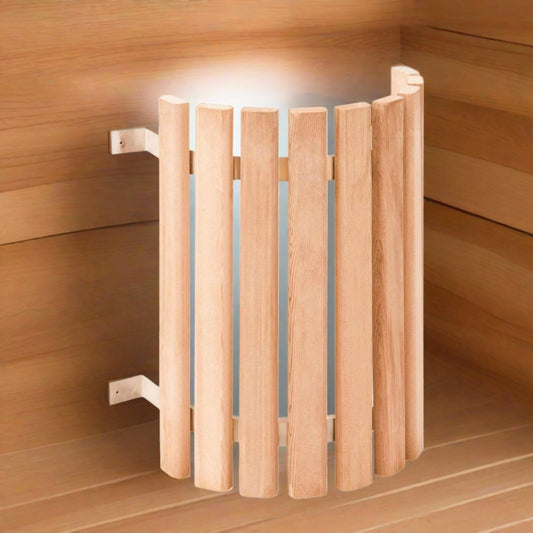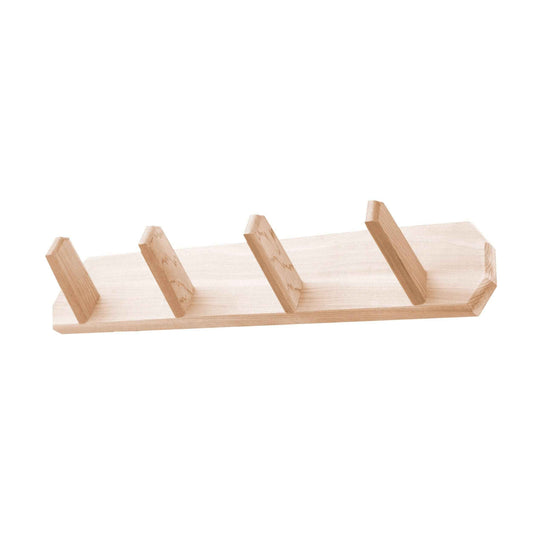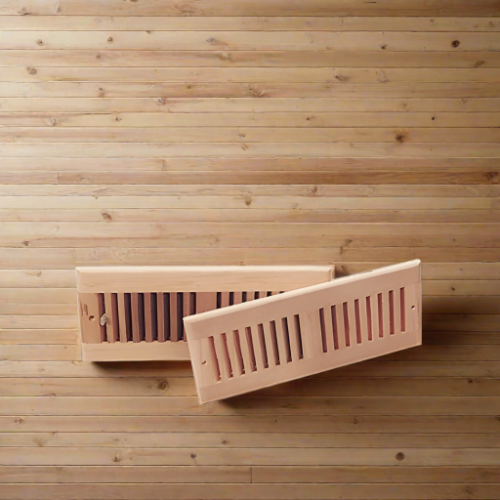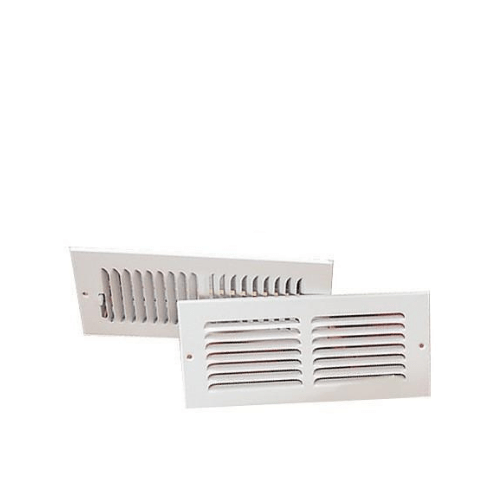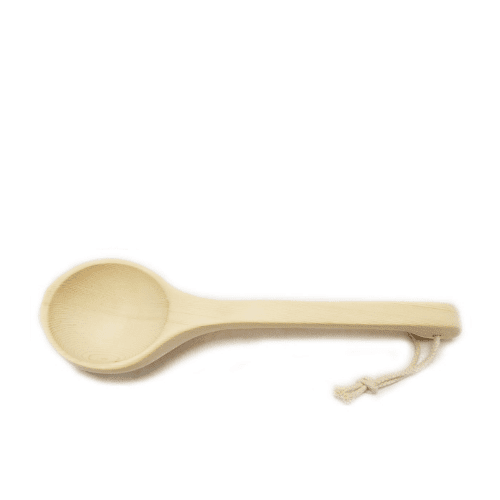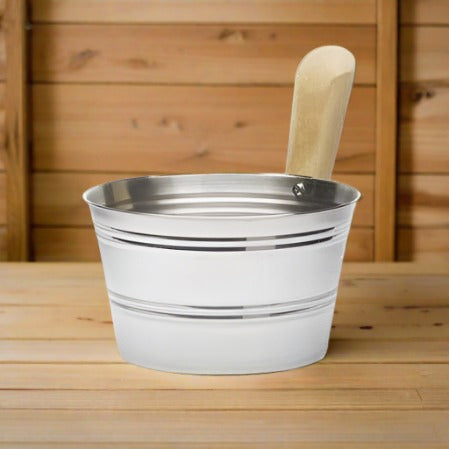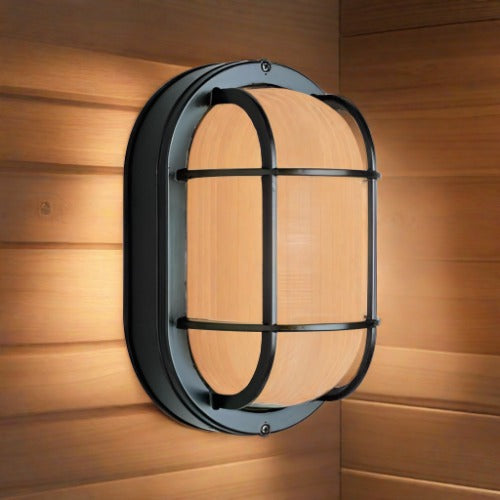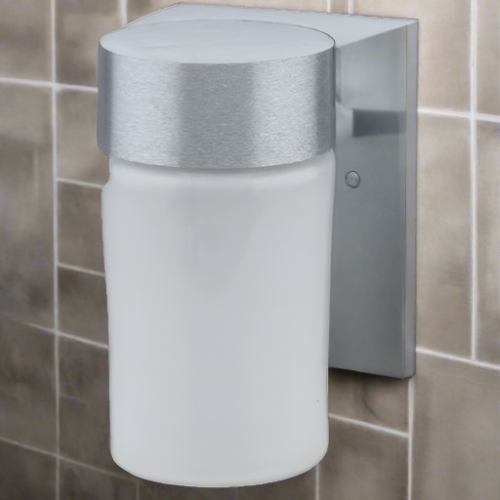-
Finlandia 19 1/2 inch Copper Sauna Ladle
Vendor:FinlandiaRegular price $56.00 USDRegular priceUnit price per -
Finlandia Copper Sauna Bucket
Vendor:FinlandiaRegular price $142.00 USDRegular priceUnit price per -
Wooden Duckboard Flooring 2' x 2'
Vendor:Scandia ManufacturingRegular price $96.00 USDRegular priceUnit price per -
Finlandia 15 1/2 inch Stainless Steel Sauna Ladle
Vendor:FinlandiaRegular price $50.00 USDRegular priceUnit price per -
Finlandia Sauna Superdek Floor Tile
Vendor:FinlandiaRegular price $24.00 USDRegular priceUnit price per -
Hanko Birch Shade for Vapor Proof Sauna Wall Light
Vendor:FinlandiaRegular price $112.00 USDRegular priceUnit price per -
Cedar Vapor- Proof Light Sconce
Vendor:Scandia ManufacturingRegular price $66.00 USDRegular priceUnit price per -
Sauna Room 4-Peg Wooden Hanger
Vendor:Scandia ManufacturingRegular price $80.00 USDRegular priceUnit price per -
Finlandia Cedar Louvre Sauna Vent Set - 4" x 10"
Vendor:FinlandiaRegular price $128.00 USDRegular priceUnit price per -
White Metal Louvre Sauna Vent Set
Vendor:FinlandiaRegular price $70.00 USDRegular priceUnit price per -
Wooden Ladle 15"
Vendor:Scandia ManufacturingRegular price $46.00 USDRegular priceUnit price per -
Finlandia Stainless Steel Sauna Bucket- 1 Gallon
Vendor:FinlandiaRegular price $80.00 USDRegular priceUnit price per
More about sauna accesories
Where should vents be in a sauna?
Vents should be placed near the base of the heater. Proper ventilation allows better circulation of the hot air. The exhaust fan is usually positioned close to the ceiling on the opposite wall.
The cold air is drawn in from the heater and brought up in front of the heater to be warmed; then, the hotter stale air rises to the top to be skimmed off by the fan.
It is essential to adjust the speed of your fan, as this can play a crucial part in maintaining your sauna temperature.
The sauna won't be hot enough if the fan moves too much air. If the fan is not strong enough, the air won't circulate properly, and the sauna will become stifling.
For safety reasons, venting is not required, but it helps make the sauna atmosphere more comfortable.
Suggested Optimal Venting Setup
For Heaters of 2-8 KW have openings 4 "x6".
The opening sizes for Heaters of 8-16 KW are 6 "x 8".
Place one vent below the heater; it will serve as the intake vent; place the second one as far away as possible in the opposite upper corner of the room.
Proper ventilation in the sauna serves multiple purposes:
Creates a convection flow that keeps the room at a more uniform temperature from top to bottom.
You get a good supply of oxygen to the other bathers while in the sauna.Proper ventilation will assist you in drying out the sauna room after it has been used.
Frame air inlet and exit vent openings approximately 3" from floor/ceiling and at least 3" from the corner.
Where do you put a sauna thermometer?
The sauna thermometer needs to be placed inside the sauna on a wall in a neutral area; it should be three feet away from the heater and the door and twelve inches from the ceiling, so the sauna temperature is registered correctly.
A sauna thermometer is an essential accessory because you need to ensure the sauna doesn't get too hot. Similarly, you will also want to make sure the temperature in your sauna doesn't stay below the desired temperature for too long.
It's crucial to purchase a thermometer that is designed for a sauna. It needs to be built with suitable materials to withstand the high temperatures inside a sauna.
Some thermometers models combine with a hygrometer that measures the humidity and water vapor in the sauna.
Where do you put a sauna thermometer?
The sauna thermometer needs to be placed inside the sauna on a wall in a neutral area; it should be three feet away from the heater and the door and twelve inches from the ceiling, so the sauna temperature is registered correctly.
A sauna thermometer is an essential accessory because you need to ensure the sauna doesn't get too hot. Similarly, you will also want to make sure the temperature in your sauna doesn't stay below the desired temperature for too long.
It's crucial to purchase a thermometer that is designed for a sauna. It needs to be built with suitable materials to withstand the high temperatures inside a sauna.
Some thermometers models combine with a hygrometer that measures the humidity and water vapor in the sauna.
What do you do with a bucket of water in a sauna?
Sauna buckets are used to store water inside the sauna. This water is used for many things like:
1. Scoop water from the sauna bucket onto the sauna rocks to produce steam ( löyly in Finnish) or humidity.
2. Use the water in the bucket to cool down the body. Pouring colder water onto you helps reduce the body temperature.
3. Keep the hair damp. The hot environment can damage hair if it's not kept moist. This helps protect the hair and promotes hair growth. Another option is to use a sauna hat to protect your hair from high temperatures.
4. Pouring water on you before a sauna session helps open the skin's pores and start the sweating process.
5. Water will help you begin to sweat quicker.Water is often poured into the sauna walls and seats to cool them off before sitting down. This helps keep the wood clean and prevents skin burning if the sauna becomes too hot.
6. Rinsing off after a sauna session. You can pour what's left in the sauna bucket over you. This helps rinse off the sweat and cool down the body so that upon exiting the sauna, you don't continue to sweat.
So as you can see, the sauna bucket is a must-have accessory. You can find wood or metal bucket and ladle in different sizes and capacities. We recommend that the ladle has a long shaft so that you can pour water into the sauna without getting a steam burn.
What is my ideal sauna door?
Sauna doors can come in different types of woods, so it is preferred to match the same kind of wood your sauna is made of. Besides that, you can opt into adding glass to your sauna door; it might be just a window or a complete full-glass door.
The benefit of having a full-glass door is that it provides a feeling of openness to your sauna, making it seem bigger. The downside is privacy; that's where a wooden door comes into play.
Are there different types of sauna floors?
Yes, sauna floors can range from the usual wood to concrete or even vinyl materials. It all depends on budget and preference.
Concrete is mainly used for commercial applications; wood and vinyl are the main options you'll have for residential use. Wood gives you a traditional sauna look, while vinyl is cheaper and doesn't warm up as much.
Do saunas need special lights?
For safety reasons, it is preferred to have heat-resistant lights, and if you want to prolong the longevity of your lights, they can also be water/vapor resistant.
Sometimes LEDs by themselves are okay, as long as they aren't directly exposed.
Are sauna hangers just for towels?
It is common to use the sauna hanger to store your towels, but you can also use it to hang hats or even brushes. In general, they are an excellent addition to having a place to put away things.
Sauna accessories
